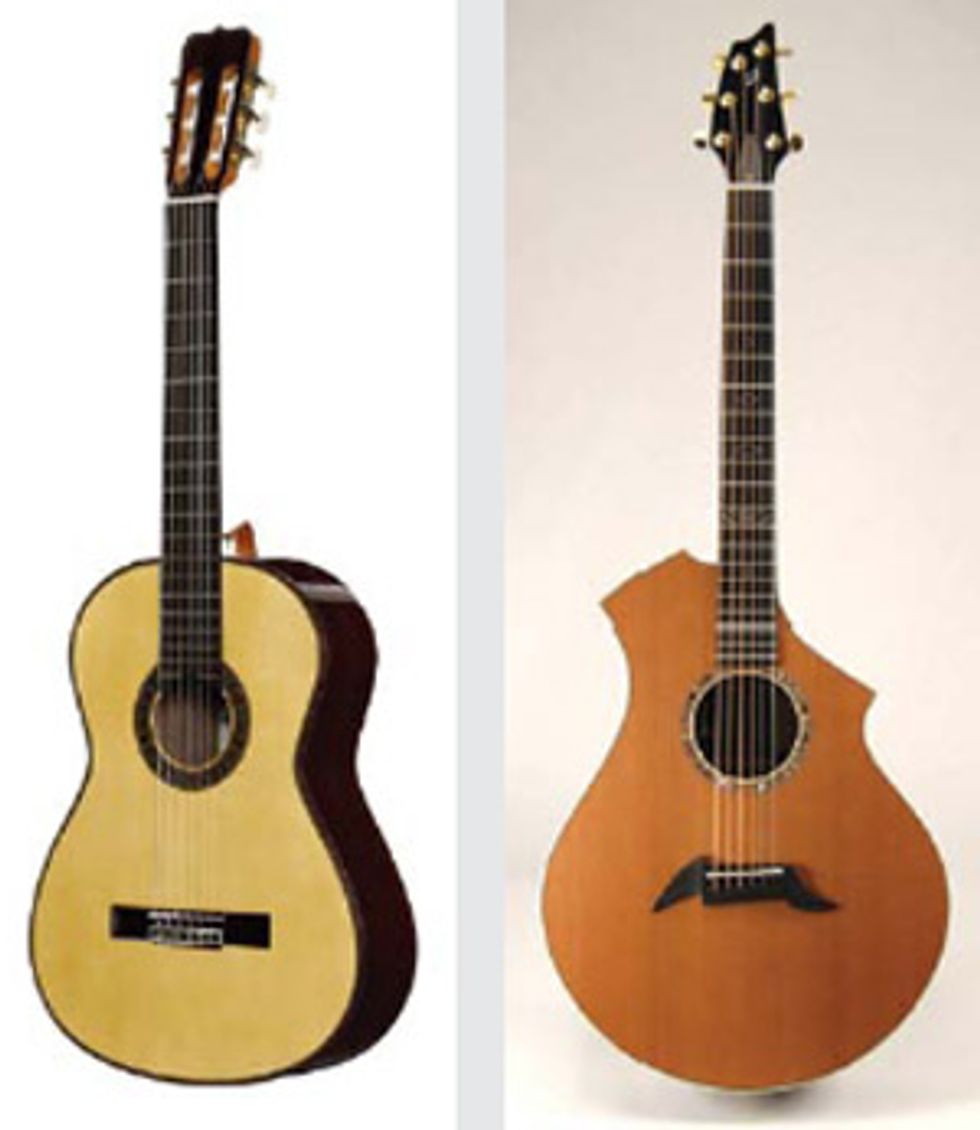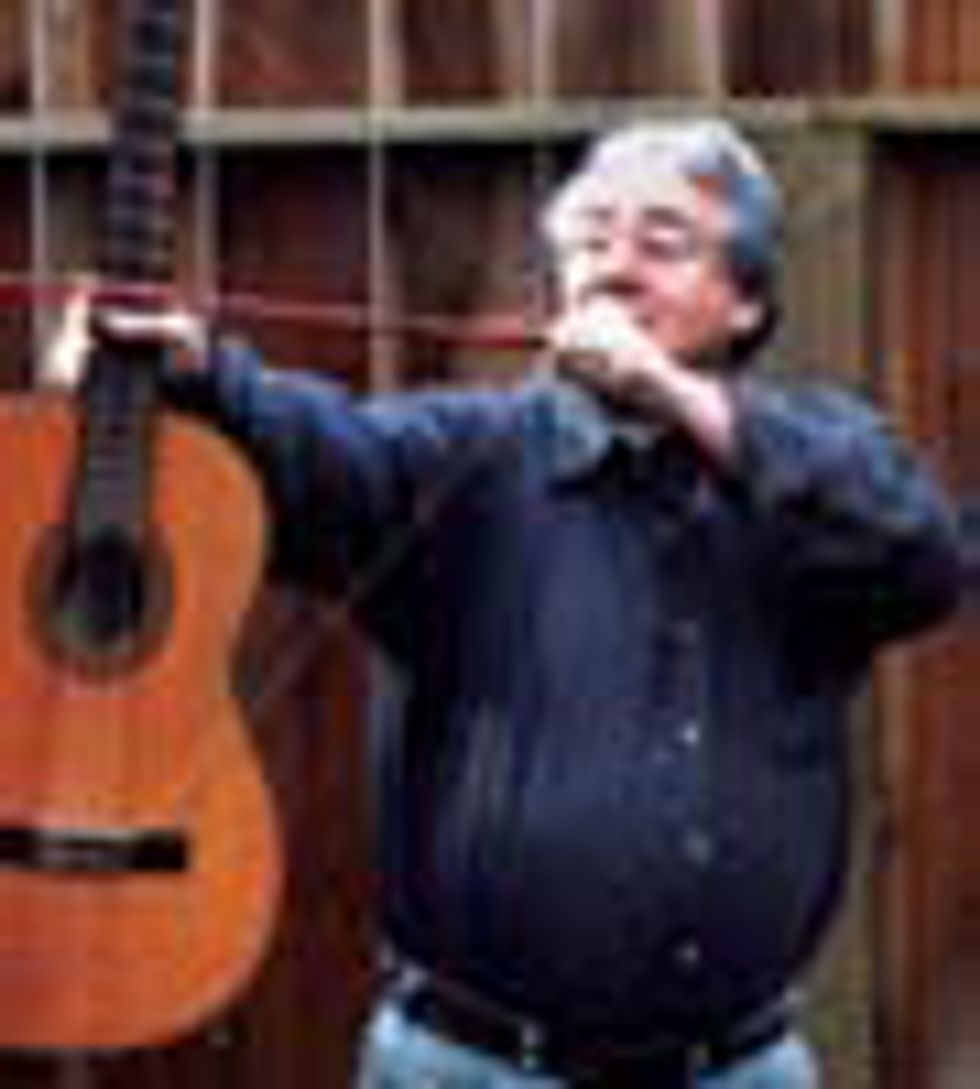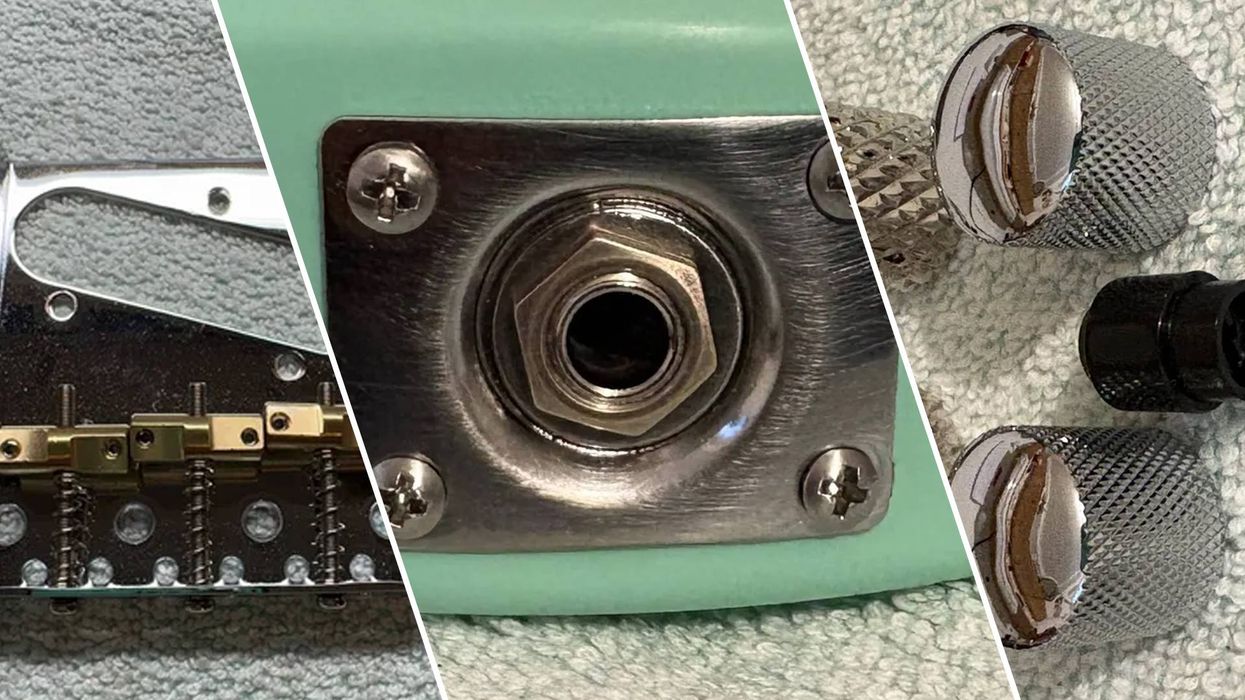 |
The difference in stringing is obvious, but this is only superficial. The most meaningful differences are internal and structural, and have to do with the fact that the steel-string guitar must be built to withstand relatively great string tension compared to the nylon-string or Spanish guitar. (Before nylon strings were invented, Spanish guitars were strung with gut strings.) And being built differently, these instruments produce tone differently. As a matter of fact, from an engineering standpoint, nylon- and steel-string guitars are totally different instruments that simply share the same name. The principal elements unique to the steel-string guitar are its neck design and size, the bridge, and the X-bracing under the face or soundboard. Let’s look at each of these elements in turn.
First, virtually all steel-string guitars have adjustable tension rods that are designed to counteract the pull of the strings. These truss rods have access ports either behind the nut or through the soundhole. The neck on nylon-string guitars are under much less of a load and do not need reinforcing rods.
The necks on steel-string and Spanish guitars are sized and shaped to support very different playing styles. Spanish guitars work best for a technique that anchors the fretting-hand thumb behind the neck, while the wrist bends and extends the fingers over the fretboard. Accordingly, this neck is wide and its back is shaped with a somewhat flattened, gentle curve.
The steel-string guitar was originally developed for a playing style in which the fretting-hand thumb wraps around the neck, while the picking-hand attacks the strings with a plectrum. Therefore, a steel-string guitar’s neck is narrow with closer string spacing. It also has a somewhat triangular cross-section with a softly rounded “peak” in the back. This design is optimized to allow players to wrap their hands around the neck, as the “V” shape fits into the valley between the thumb and the other fingers.
The steel-string bridge differs greatly from its Spanish counterpart. For starters, the strings tie directly onto the Spanish guitar bridge. This design works well within the holding power of the glue joint that keeps the bridge on the guitar face. Metal strings, however, exert so much pull that merely glued-on bridges will lift off. Steel-string luthiers realized that a better solution was to anchor the strings to the underside of the face itself, and bypass the possibility of glue failure at the bridge. This explains why the strings pass through the bridge into the body cavity on a steel-string.
Also, the Spanish guitar saddle is parallel to the frets, while the steel-string saddle is at an angle. This is necessary because the very stiffness and mass of metal strings create intonation problems, which increase with string diameter. Heavier strings need to be slightly longer to achieve correct intonation, and slanted saddles are called “compensated” saddles for this reason.
Both the layout and amount of bracing control a guitar’s sonic characteristics. I wrote about this in my August 2010 column, “What Makes an Acoustic Tick.” You can read it online at premierguitar.com/aug2010 and view photos that illustrate various bracing patterns. There are many factors that go into a guitar’s internal bracing, and the importance of these factors far outweighs the instrument’s structural characteristics when discussing sonic traits.
I’m often asked, “Why are there so many sizes and shapes of steel-string guitars to choose from, while classical guitars all have very nearly the same size and shape?” The classical guitar is considered almost perfect by its adherents, and builders are encouraged to refine the design, but not change it. The steel-string guitar world, however, is not bound by such thinking and steel-string builders are free to invent new versions and features as long as someone will buy their instruments—much like the automobile industry. Consequently, with both cars and guitars, models are sometimes released that are not on par with their predecessors.
Another and more interesting reason is that steel-string guitar music and its playing techniques are changing. In the classical guitar world, these factors are moving ahead slowly as technique, repertoire, and accepted design are comparatively frozen. Because the flattop guitar is so relatively new—virtuosic steel-string soloists, interpreters, arrangers, and composers only really began to emerge in the 1960s—we’re experiencing an explosion of musicians who are exploring and discovering new tonal, dynamic, and compositional possibilities for their chosen instrument.
Consequently, guitarists are demanding higher levels of responsiveness, tonality, playability, and fidelity of intonation from their steel-strings. Most recently, ease of amplification and recordability have also become essential considerations. This is a very exciting time for the steel-string guitar, and there’s no reason to think these factors will not continue to grow for decades to come. Next month, we’ll wrap up our exploration of the steel-string with thoughts about its cultural significance.
 Ervin Somogyi
Ervin SomogyiA professional luthier since the early 1970s, Ervin Somogyi is one of the world’s most respected acoustic-guitar builders and rosette designers. To learn more about Somogyi, his instruments, or his rosette and inlay artwork, visit esomogyi.com.











![Rig Rundown: Russian Circles’ Mike Sullivan [2025]](https://www.premierguitar.com/media-library/youtube.jpg?id=62303631&width=1245&height=700&quality=70&coordinates=0%2C0%2C0%2C0)





